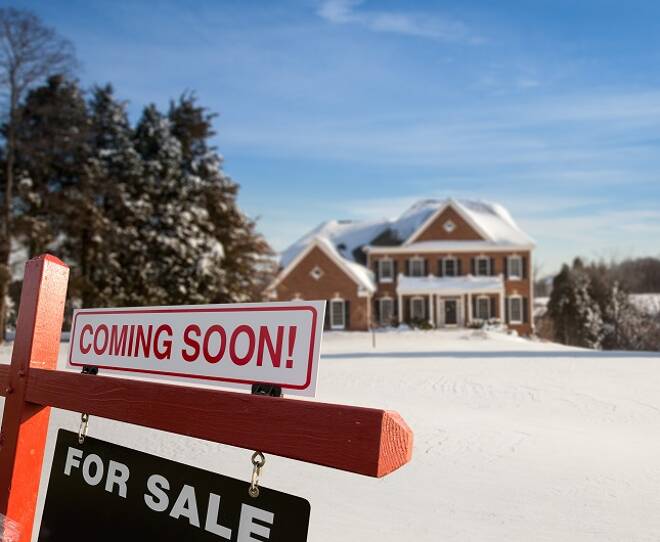Advertisement
Advertisement
U.S Mortgage Rates Held Steady Last Week, with COVID-19 Delivering Uncertainty
By:
There was little movement in mortgage rates last week, with the markets in pause mode ahead of FED Chair Powell's speech on Friday.
Mortgage rates avoided another weekly decline, with 30-year fixed rates on the rise for just the 3rd time in 9-weeks.
In the week ending 26th August, 30-year fixed rates rose by 1 basis point to 2.87%. Mortgage rates had slipped by 1 basis point in the week prior.
30-year mortgage rates have risen just once beyond the 3% mark Since 21st April.
Compared to this time last year, 30-year fixed rates were down by 4 basis points.
30-year fixed rates were still down by 207 basis points since November 2018’s last peak of 4.94%.
Economic Data from the Week
It was a relatively busy first half of the week on the U.S economic calendar.
Prelim private sector PMIs for August and core durable goods orders for July were in focus.
Private sector PMI numbers disappointed mid-way through the 3rd quarter. The all-important services PMI fell from 59.9 to 55.2. Economists had forecast a more modest decline to 59.5. Manufacturing sector activity fared somewhat better, with the PMI declining from 63.4 to 61.2.
Core durable goods orders eased some pain, however, rising by 0.7% in July. In June, core durable goods orders had risen by 0.6%.
While the stats were skewed to the negative, the markets were holding out for FED Chair Powell’s speech on Friday. Uncertainty over FED monetary policy following the impressive NFP numbers for July kept the markets apprehensive through the week.
Freddie Mac Rates
The weekly average rates for new mortgages as of 26th August were quoted by Freddie Mac to be:
- 30-year fixed rates rose by 1 basis point to 2.87% in the week. This time last year, rates had stood at 2.91%. The average fee fell from 0.7 points to 0.6 points.
- 15-year fixed increased by 1 basis point 2.17% in the week. Rates were down by 29 basis points from 2.46% a year ago. The average fee remained unchanged at 0.6 points.
- 5-year fixed rates declined by 1 basis point to 2.42%. Rates were down by 49 points from 2.91% a year ago. The average fee fell from 0.3 points to 0.2 points.
According to Freddie Mac,
- The tug-of-war between the economic recovery and rising COVID-19 cases left mortgage rates on a sideways move.
- Overall, rates continue to be low, with a window of opportunity for those who did not refinance under 3%.
- From a homebuyer perspective, purchase application demand is improving, but the major obstacle to higher home sales remains low inventory for consumers to purchase.
Mortgage Bankers’ Association Rates
For the week ending 20th August, the rates were:
- Average interest rates for 30-year fixed with conforming loan balances decreased from 3.06% to 3.03. Points decreased from 0.34 to 0.29 (incl. origination fee) for 80% LTV loans.
- Average 30-year fixed mortgage rates backed by FHA fell from 3.15% to 3.10%. Points declined from 0.31 to 0.29 (incl. origination fee) for 80% LTV loans.
- Average 30-year rates for jumbo loan balances decreased from 3.19% to 3.13%. Points remained unchanged at 0.26 (incl. origination fee) for 80% LTV loans.
Weekly figures released by the Mortgage Bankers Association showed that the Market Composite Index, which is a measure of mortgage loan application volume, increased by 1.6% in the week ending 20th August. In the week prior, the index had decreased 3.9%.
The Refinance Index increased by 10% and was 3% higher than the same week a year ago. The index had decreased by 5% in the previous week.
In the week ending 20th August, the refinance share of mortgage activity remained unchanged at 67.3%. The share had decreased from 68.0% to 67.3% in the week prior.
According to the MBA,
- Treasury yields fell last week as investors continue to anxiously monitor if the rise in COVID-19 cases start to dampen economic activity.
- Mortgage rates fell as a result, with the 30-year fixed falling for the first time in 3-weeks.
- Lower rates led to an increase in refinance applications.
- The purchase index was at its highest level since early July, despite still continuing to lag 2020’s pace.
- There was also some easing in average loan sizes, which is potentially a sign that more first-time buyers are being helped by an increase in inventory.
For the week ahead
Consumer confidence, ADP nonfarm employment change, and ISM Manufacturing PMI figures will be in focus.
While the manufacturing numbers will influence, expect consumer confidence and the ADP numbers to have a greater impact on yields.
From elsewhere, private sector PMI numbers from China will also influence market risk sentiment in the week.
Away from the economic calendar, COVID-19 numbers will continue to draw interest.
About the Author
Bob Masonauthor
With over 28 years of experience in the financial industry, Bob has worked with various global rating agencies and multinational banks. Currently he is covering currencies, commodities, alternative asset classes and global equities, focusing mostly on European and Asian markets.
Advertisement
